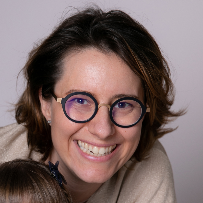CRF awarded Justine Bacchetta, MD, PhD, and Irma Machuca-Gayet, PhD, their first cystinosis research grant in 2018, for the study of cysteamine toxicity on the bone which became known as the CYSTEABONE project. The second grant was awarded in the fall of 2020, to further study the pathophysiology of bone disease in nephropathic cystinosis. This is the first progress report for the CYSTEABONE grant in 2020.
Summary/Abstract
Bone impairment has been recently described in patients with nephropathic cystinosis 1–3, with international recommendations for diagnosis and management published in 2019; the concept of “cystinosis metabolic bone disease” is currently emerging 4. Even though its exact pathophysiology remains unclear, at least five distinct but complementary entities can explain bone impairment in patient with cystinosis: long-term consequences of renal Fanconi syndrome, malnutrition and copper deficiency, hormonal disturbances, myopathy, and intrinsic/iatrogenic bone defects. This complication has a significant impact on patients’ quality of life, because of an increased frequency of bone pains, deformations and fractures occurring in late teenage and early adulthood.
The CYSTEABONE-2020 project aims to better understand the underlying mechanisms of bone impairment in cystinosis, and to identify putative new therapeutic approaches to improve (or prevent the onset of) bone symptoms. Indeed we had previously reported specific cystinosis-related bone damage in patients independent of mineral and bone abnormalities secondary to chronic disease 1,5. The first steps of the CYSTEA-BONE project have been funded by the Cystinosis Research Foundation in 2018. This first CRF funding had allowed us to better understand the underlying mechanisms of cysteamine bone toxicity, and to demonstrate intrinsic osteoclastic defect in cystinosis. We have recently achieved an overlapping 2018/2020 study on genotype /phenotype correlation in osteoclasts from NC patients 6.




